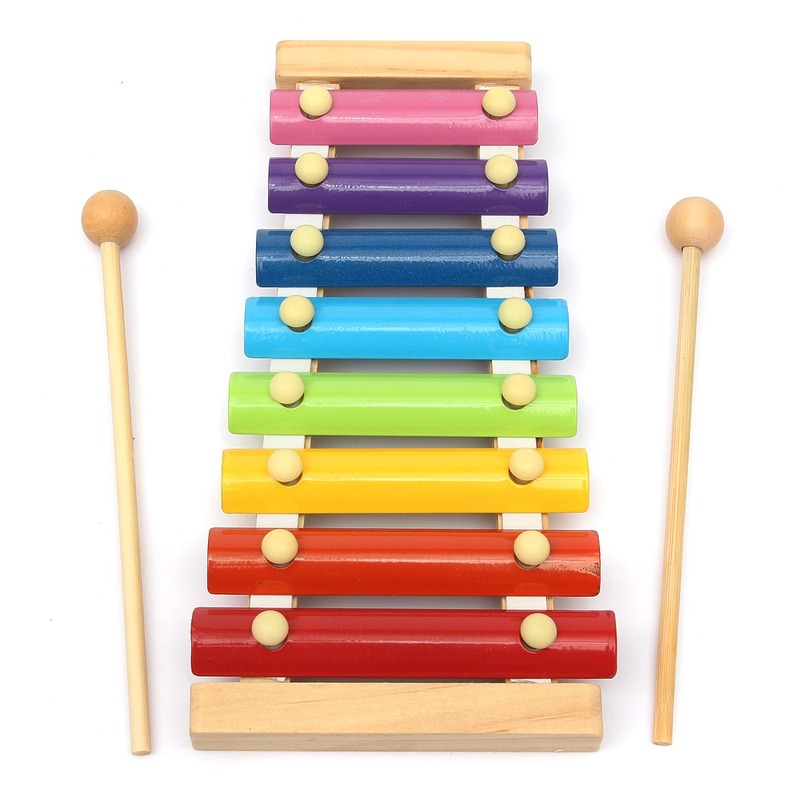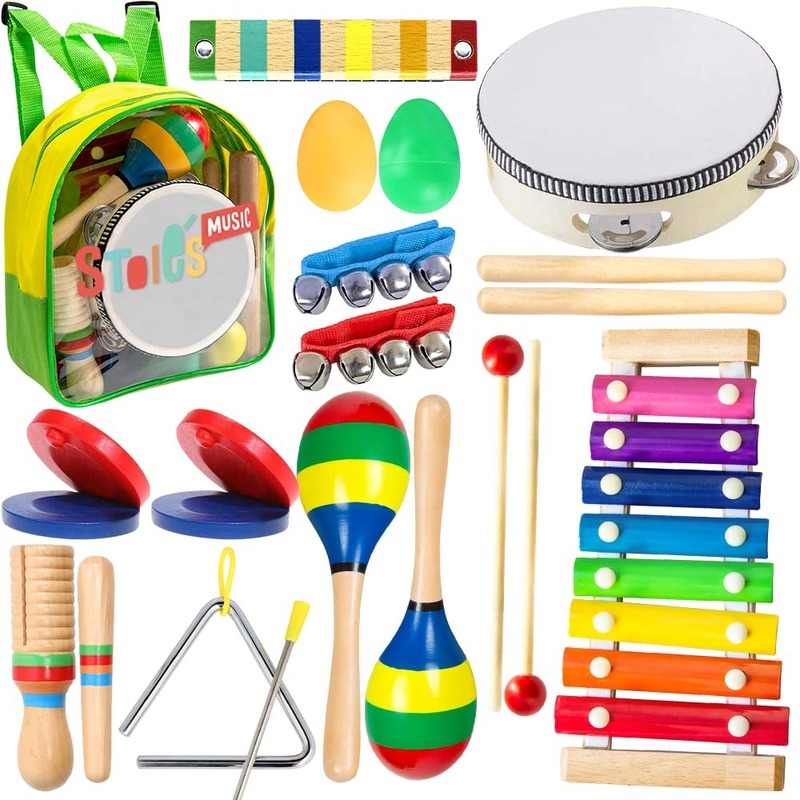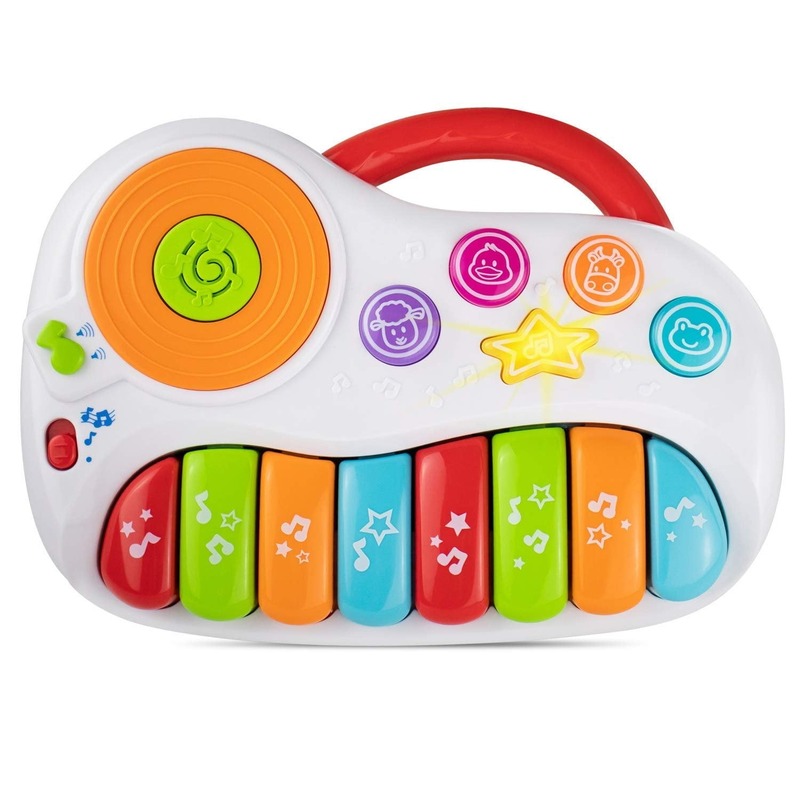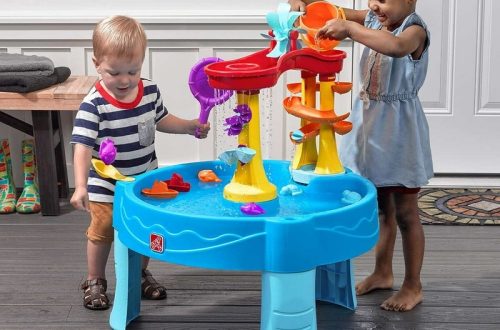The Role of Musical Toys in Early Childhood Education
Incorporating musical toys into early childhood education is a powerful step. These toys are more than just playthings. They are educational tools that stimulate young minds in many ways. Let’s delve into the benefits they offer.
Firstly, musical toys introduce children to sounds and rhythms. This early exposure can sharpen auditory skills and help kids distinguish between different musical patterns. Kids learn to predict sequences, which is a foundational skill in problem-solving.
Secondly, these toys can spark an interest in music and arts from a tender age. When children engage with musical toys, they often transition into music appreciation. This can lead to lifelong enjoyment and potential pursuit of music as a discipline.
Thirdly, the act of playing with musical toys involves following directions and understanding cause and effect. For example, hitting a drum will produce a sound. This is a simplistic but essential lesson in comprehension and sensory processing.
Fourthly, musical toys set the stage for social interaction. When children play music together, they learn to share, take turns, and support each other’s performance. It’s a group activity that fosters teamwork and communication.
Lastly, early childhood education benefits from using musical toys through the enhancement of memory and attention span. Simple songs and rhythms can help children memorize information and keep them engaged for longer periods of time.
Overall, musical toys are invaluable in the developmental toolbox of early education. They nurture a broad range of essential skills that build a strong foundation for future learning. Be sure to include ‘musical toys’ in playtime and watch your child grow in surprising ways.

Cognitive Benefits of Playing with Musical Toys
The influence of musical toys on cognitive development is profound and varied. By engaging with these toys, children enhance critical thinking and improve their problem-solving abilities. Musical toys such as puzzles that require matching sounds foster analytical skills. Children learn to recognize patterns and sequences, which bridges to mathematical concepts.
Moreover, the use of musical toys boosts memory retention. Simple tunes and repetitive rhythms aid in memorizing basic melodies that can be recalled later, indicating an improved memory. This practice of remembering tunes today could lead to better academic learning tomorrow.
Concentration is another cognitive skill that is positively impacted by musical play. The focus required to follow a rhythm or maintain a beat can carry over to other tasks, helping children to concentrate better in more academic settings.
Additionally, musical toys introduce early concepts of physics and mechanics through hands-on interaction. For example, understanding the cause and effect relationship between the action of tapping a drum and the resultant sound is a fundamental cognitive lesson.
Overall, musical toys play a critical role in sharpening a child’s mind and building cognitive skills that support their education journey. Parents and educators should encourage playtime with musical toys to enhance children’s intellectual development.
Emotional and Social Development through Musical Play
Musical play is vital for emotional and social growth in children. When kids engage with musical toys, they learn to express their feelings through the rhythm and melody. This emotional outlet is essential for young minds.
Playing instruments with others teaches sharing and cooperation. Kids learn to wait their turn to play an instrument. Then, they join in creating music together. This social interaction helps children understand teamwork and build friendships.
Moreover, music can calm or energize, teaching kids emotional regulation. They become aware of how music affects their mood and behavior. By playing musical toys, children learn to manage their emotions better. This skill is critical for future social interactions.
Musical toys also encourage empathy. Children hear happy or sad tunes and begin to relate these sounds to emotions. They start to understand how others may feel in different situations. This awareness supports their social development.
In summary, musical play not only nurtures emotional expression but also enhances social skills. Children who frequently engage with musical toys tend to be more emotionally aware and socially adept. Parents and educators should promote musical play to foster these important aspects of child development.
Encouraging Creativity and Self-Expression
Musical toys provide a unique outlet for creativity and self-expression in children. These toys allow them to experiment with sounds and create their own melodies, nurturing their imaginative capabilities. When children are free to explore and manipulate musical instruments, they learn to produce and control different tones and tunes. This hands-on play encourages them to use their creativity to express themselves non-verbally.
Engaging with musical toys often helps children in developing their personal sense of style and preference in art and music. They discover the joy of making something uniquely theirs. Whether it’s a simple drum rhythm or a complex melody on a keyboard, musical play gives children the freedom to express their feelings and thoughts through music. This form of self-expression is critical for emotional health and identity formation.
Parents and educators can further encourage this by celebrating children’s musical creations, however simple they might be. Praise and recognition for their musical attempts can boost their confidence and encourage further experimentation. Choosing musical toys that are appropriate for the child’s age and development stage can help in fostering a positive environment for creativity to flourish.
Lastly, providing opportunities for children to share their musical experiences with others reinforces the value of their creative efforts. It also offers moments of pride and accomplishment. Through practicing and performing, children gain the courage to express themselves and their original ideas more freely. This bravery can extend to other non-musical arenas of their lives, enhancing their overall confidence and creative expression.
Incorporating musical toys into playtime is not just about creating sound; it’s about unlocking the boundless creativity within each child and providing a means for their self-expression.
Fine Motor Skill Development with Musical Instruments
Musical toys aren’t just for fun; they boost children’s fine motor skill development. Handling these toys strengthens small muscles in kids’ hands and fingers. This is crucial because they need these muscles for writing and other delicate tasks later on.
For instance, pressing piano keys or strumming a guitar requires coordination and precision. As children master these actions, they gain better control over their finger movements. They learn to be more dexterous, which is important for daily activities. Plus, manipulating these instruments hones their hand-eye coordination, a vital skill in all walks of life.
Shaking a maraca or gripping a tambourine also contributes to motor skill growth. These activities require children to grasp firmly and move to a rhythm, further enhancing their coordination. The repetition found in musical play, like hitting a drum in time, reinforces muscle memory. Over time, this repeated action makes their movements more accurate and fluid.
Moreover, musical toys like xylophones and drum sets compel kids to use different fingers. This action educates their brain to recognize individual finger use. Learning instruments early can even prepare children for tasks involving fine motor skills, such as typing or sewing.
In short, incorporating musical toys in playtime is highly beneficial. These toys provide a foundation for the fine motor skills children will use throughout their lives. So, include musical instrument play in a child’s routine and watch their fine motor abilities soar.

The Impact of Musical Toys on Language and Literacy
Musical toys play a key role in developing language and literacy in children. The act of singing along to rhythms and tunes can notably enhance a child’s vocabulary and diction. By learning the lyrics and singing, children practice language sounds and improve their pronunciation. Repetition through song is a fun way to solidify their grasp on new words and phrases.
Furthermore, many musical toys include written words or lyrics, which exposes children to written language. This exposure can spark an early interest in reading. As children link the written words with the sounds they hear, they begin to understand the basic concepts of literacy.
Songs with stories or certain themes can also expand a child’s comprehension skills. They listen to the narrative within the song, which teaches them to follow along and anticipate language patterns. This listening skill is essential for reading comprehension later in academic life.
Rhymes and alliteration found in many children’s songs are effective tools for literacy. These linguistic devices make language learning more engaging and memorable. They also help children recognize phonetic patterns, which is important for spelling and decoding words.
Interaction with musical storybooks that combine audio with visual cues can foster literacy. Children can press buttons to hear the spoken words while following along with the text. This multi-sensory approach reinforces the connection between spoken and written language.
In summary, musical toys are not just instruments for play. They are early educators that contribute to a child’s language and literacy. Parents and educators should include musical toys in learning activities to promote language development in a fun, interactive way.
How to Choose the Right Musical Toys for Different Ages
Choosing the right musical toys for a child’s age is key to their development. For infants, soft toys that make gentle sounds are ideal. These may include rattles or soft drums. They are easy to grip and help with sensory development.
As toddlers grow, they can handle more complex toys. Toy pianos or simple string instruments fit their exploration needs. These should be durable and safe with no sharp edges or small parts.
Preschoolers are ready for the next level. They can use slightly more sophisticated instruments. These include small-sized guitars or a beginner’s drum set. These toys should encourage them to explore different sounds while being robust enough for their energetic play.
For kids aged 5 to 7, musical toys that introduce basic music concepts are great. Look for toys that teach notes, rhythm, and even early songwriting. Examples are keyboards with teaching modes or wind instruments designed for small hands.
Older children might enjoy learning real instruments, like a ukulele or a violin. At this stage, focus on their interests. Encourage them to choose the instrument they’d like to play.
Remember to consider the child’s interest and engagement level when selecting toys. The ultimate goal is to make learning fun and natural through play. So, it’s important to choose toys that match the child’s developmental stage and curiosity.

Incorporating Musical Toys into Daily Playtime Routines
To optimize a child’s development, weaving musical toys into daily playtime is essential. Here are practical ways to do it:
- Start the day with music. Play gentle tunes on a musical toy as the child wakes up. This sets a positive tone for the day.
- Use musical toys during transition times. Switching activities can be hard for kids. Music makes it smoother.
- Encourage free play with musical instruments. Let the child explore sounds without structured rules. This boosts creativity and exploration.
- Include musical toys in group play. This helps with social skills like sharing and cooperating.
- Create a nightly routine that involves music. Calming melodies from a musical toy can signal that bedtime is near.
- Celebrate achievements with music. Praise the child’s progress by singing a celebratory tune or playing an upbeat rhythm.
Remember to pick age-appropriate musical toys. This ensures safety and keeps the child engaged. Rotate toys regularly to maintain interest. Avoid overwhelming the child. Too many choices can be distracting.
By incorporating musical toys into everyday routines, learning and fun blend seamlessly. This method encourages daily growth in various developmental areas.




